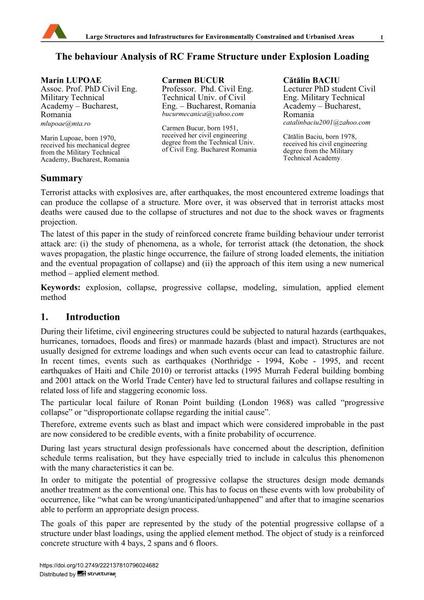The behaviour Analysis of RC Frame Structure under Explosion Loading

|
|
|||||||||||
Bibliographic Details
| Author(s): |
Marin Lupoae
Carmen Bucur Cătălin Baciu |
||||
|---|---|---|---|---|---|
| Medium: | conference paper | ||||
| Language(s): | English | ||||
| Conference: | IABSE Symposium: Large Structures and Infrastructures for Environmentally Constrained and Urbanised Areas, Venice, Italy, 22-24 September 2010 | ||||
| Published in: | IABSE Symposium Venice 2010 | ||||
|
|||||
| Page(s): | 294-295 | ||||
| Total no. of pages: | 8 | ||||
| Year: | 2010 | ||||
| DOI: | 10.2749/222137810796024682 | ||||
| Abstract: |
Terrorist attacks with explosives are, after earthquakes, the most encountered extreme loadings that can produce the collapse of a structure. More over, it was observed that in terrorist attacks most deaths were caused due to the collapse of structures and not due to the shock waves or fragments projection. The latest of this paper in the study of reinforced concrete frame building behaviour under terrorist attack are: (i) the study of phenomena, as a whole, for terrorist attack (the detonation, the shock waves propagation, the plastic hinge occurrence, the failure of strong loaded elements, the initiation and the eventual propagation of collapse) and (ii) the approach of this item using a new numerical method – applied element method. |
||||
| Keywords: |
progressive collapse modeling collapse simulation explosion applied element method
|
||||
